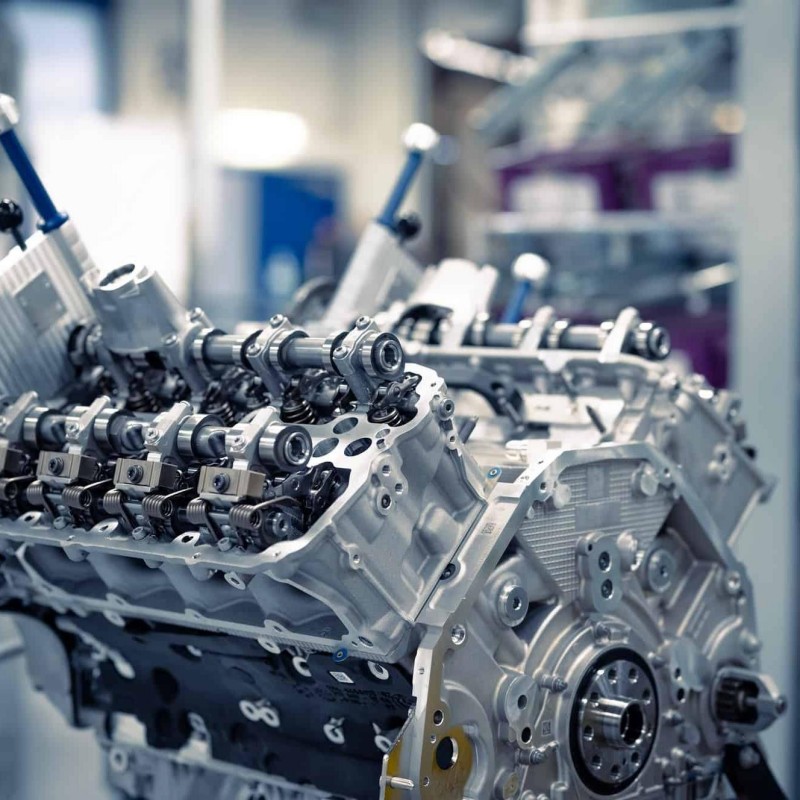When it comes to understanding how an engine operates, one of the most critical components to consider is the valves. But what do valves do in an engine, and why are they so essential? Valves play a pivotal role in controlling the flow of air and fuel into and out of the combustion chamber in internal combustion engines. They are vital for maintaining the engine’s efficiency and performance. In simple terms, valves ensure that the engine breathes appropriately, which can significantly affect power output, fuel efficiency, and overall engine longevity. A deeper understanding of what valves do can help enthusiasts and everyday drivers alike appreciate the complexity of their vehicles and the engineering feats that make modern engines so advanced. In this article, we will explore the various types of valves, their operation, potential issues, and maintenance tips to ensure optimal functionality and performance.

An Overview of Engine Valves
Before delving into the specifics of what do valves do in an engine, it’s helpful to understand their fundamental purpose and the types of valves commonly found in internal combustion engines.
Types of Valves
There are primarily two types of valves in an engine: intake valves and exhaust valves. Each serves a distinct purpose:
- Intake Valves: These valves control the flow of air and fuel mixture into the combustion chamber. When the engine’s cylinder lowers, the intake valves open to allow the air-fuel mixture to enter.
- Exhaust Valves: In contrast, exhaust valves manage the exit of burnt gases from the combustion chamber after combustion occurs. After the power stroke, the exhaust valves open to release gases and prepare the cylinder for the next cycle.
Valve Mechanisms
Valves are opened and closed using mechanical components such as camshafts, pushrods, and rocker arms. The coordination between these components ensures that the valves operate at the correct timing, allowing the engine to function efficiently.
The Functionality of Engine Valves
Understanding the functionality of engine valves is crucial for grasping how they contribute to the engine’s performance. The synchronized operation of intake and exhaust valves is fundamental to the four-stroke engine cycle, which consists of the intake, compression, power, and exhaust strokes.
The Four-Stroke Cycle
Each cycle in a four-stroke engine relies on proper valve operation. Here’s how it works:
- Intake Stroke: The piston moves down, creating a vacuum inside the cylinder. The intake valve opens, allowing the air-fuel mixture to flow into the cylinder.
- Compression Stroke: The piston moves up, compressing the air-fuel mixture. Both the intake and exhaust valves remain closed to ensure that the mixture is compressed properly.
- Power Stroke: The spark plug ignites the compressed mixture, causing an explosion that drives the piston down. As the piston descends, the exhaust valve remains closed, and the intake valve typically remains closed as well.
- Exhaust Stroke: The piston moves back up, pushing exhaust gases out of the cylinder. During this stroke, the exhaust valve opens, allowing the spent gases to exit.
Timing and Synchronization
The timing and synchronization of valve operation are crucial for optimal engine performance. Valves must open and close at precise intervals to ensure that air and fuel enter the engine while exhaust gases exit efficiently. This precision is often managed by the camshaft, which rotates at half the speed of the crankshaft.
The Importance of Valves in Engine Performance
Valves are integral to several aspects of an engine’s overall performance. The efficiency of their operation directly impacts everything from power output to fuel consumption.
Power Generation
One of the primary responsibilities of valves is facilitating the flow of the air-fuel mixture into the combustion chamber. If the valves do not open and close correctly, the engine may struggle to generate power due to insufficient air and fuel supply. This can lead to reduced acceleration and overall engine performance.
Fuel Efficiency
The timing of the valves also influences fuel efficiency. If the valves remain open too long or close too quickly, the engine may not be able to draw in the optimal amount of air and fuel. This inefficiency can lead to higher fuel consumption and increased emissions.

Engine Longevity
Properly functioning valves contribute to the longevity of the engine. If valves become stuck, improperly aligned, or damaged, they can lead to severe engine issues such as misfires or loss of compression. Regular maintenance and timely repairs are essential to ensure the valves operate smoothly.
Common Problems with Engine Valves
Understanding common valve problems can help engine owners recognize warning signs and address issues promptly. Here are some typical valve-related issues faced in engine systems:
Valve Timing Issues
If the timing of the valves is not synchronized with the engine cycle, it can cause misfires or backfiring, leading to poor engine performance. Timing issues may stem from a malfunctioning camshaft or broken timing chain or belt.
Valve Wear and Tear
Over time, valves can experience wear due to the extreme heat and pressure of the combustion process. Valves can become pitted, warped, or bent, leading to reduced sealing effectiveness and poor engine performance.
Carbon Build-Up
Carbon deposits can accumulate on the valves over time, especially in engines that frequently use lower-quality fuels. These deposits can interfere with valve movement and sealing, resulting in misfiring and reduced efficiency.
Leaking Valves
Leaking valves occur when the valve seats wear out or are damaged, preventing them from sealing properly. This issue can lead to lowered compression in the engine and significantly affect performance and fuel efficiency.
Diagnosing Valve-Related Problems
Detecting valve issues can be challenging, but a few symptoms can signal potential problems. Here are common signs and methods to diagnose valve-related issues:
Engine Noises
Unusual tapping, knocking, or rattling sounds from the engine can indicate problems with the valve train or issues such as improper valve clearance. Listening closely to the engine during operation can help you identify anomalies.
Poor Engine Performance
If you experience a decrease in acceleration or feel that your vehicle is underperforming, it could signify a valve issue. Reduced power and responsiveness may also be linked to vacuum leaks caused by improperly sealing valves.
Check Engine Light
The check engine light can illuminate due to valve-related issues, particularly if the valve timing is incorrect or if performance problems are detected. Having the vehicle scanned for error codes can provide insight into potential valve issues.
Engine Misfires
Experiencing engine misfires can indicate poor valve performance, as these issues may stem from insufficient airflow or improper sealing during combustion.
Compression Testing
Performing a compression test can diagnose issues with valve sealing. This procedure involves measuring the pressure generated during the compression stroke of each cylinder. Inconsistent compression readings across cylinders can point to valve problems.
Maintenance Tips for Engine Valves
To keep engine valves operating efficiently, regular maintenance is essential. Here are some tips to help you maintain healthy valves:
Regular Oil Changes
Regular oil changes using high-quality oil can prevent the build-up of sludge that can cause valve sticking and wear. This practice helps to ensure that your engine operates smoothly and efficiently.
Use Quality Fuel
Utilizing high-quality fuel helps reduce the formation of carbon deposits on the valves. While premium fuel is typically more expensive, it can lead to better performance and longevity for your engine.
Perform Valve Adjustments
Regularly check the valve clearances and carry out necessary adjustments. Proper valve clearance ensures efficient operation and prevents excessive wear on valve components.
Conduct Routine Inspections
Regularly inspect your engine for any signs of oil leaks, unusual noises, or performance issues. Catching these problems early can save you time and money on repairs.
Seek Professional Maintenance
If you’re unsure about inspecting or maintaining your engine valves, consult a professional mechanic. Getting regular check-ups helps ensure that all engine components, including valves, are in good working order.
The Future of Engine Valve Technology
The automotive industry is continuously innovating, and advancements in engine valve technology are no exception. Here are some key areas where significant developments are expected in the future:
Variable Valve Timing
Variable Valve Timing (VVT) technology enhances the operation of valves by optimizing timing for various engine speeds and loads. This technology improves fuel efficiency and performance, allowing for better power delivery at different rpm levels.
Smart Valves with sensors
The incorporation of smart technology into engine components, including valves, allows for real-time monitoring and adjustments based on driving conditions. This technology creates opportunities to optimize performance while reducing emissions.
Advanced Materials
With advancements in materials science, engine valves are being manufactured from high-performance materials that offer better resistance to wear and thermal stress. Materials such as titanium and specialized alloys may become more common, extending the lifespan of valve components.
Hybrid and Electric Engines
As hybrid and electric vehicles become more prevalent, innovations in valve technology are likely to focus on maximizing efficiency and performance in these systems. The transition to electric power may also lead engineers to rethink traditional valve concepts.

Conclusion
Understanding what do valves do in an engine is essential for anyone interested in automotive mechanics or looking to optimize their vehicle’s performance. Valves play a central role in managing the intake of air and fuel and the exhaust of gases, affecting everything from engine efficiency to power output.
By learning about common problems associated with valves and the importance of regular maintenance, vehicle owners can ensure their engines remain in top condition. Moreover, staying informed about advancements in valve technology prepares enthusiasts and professionals alike for the future of automotive engineering.
As the auto industry moves forward, innovations in valve design will undoubtedly contribute to the performance, efficiency, and sustainability of engines for years to come. Embracing these changes will not only help drivers enjoy better performance today but also position them for success in an ever-evolving automotive landscape.


